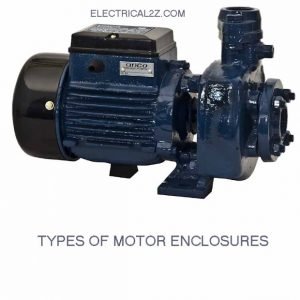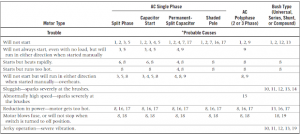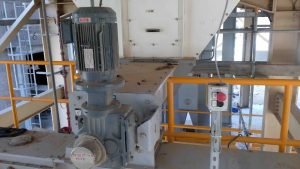Causes and Rectification of Motor Winding Low Insulation Resistance
Low insulation is almost invariably the result of absorption moisture by the insulated windings, since most of the insulating windings, since most of the insulating materials employed are hygroscopic. To maintain high insulation values, the following precautions should be taken.
1. Don’t allow dust to accumulate on the motor windings. Dust and dirt absorb and retain moisture, leading to leakage of electricity which may finally results in a breakdown. Clean up the motor windings periodically by blowing compressed air, and wipe the outer surface of windings clean and bright by a dry cloth.
2. Oil and grease are equally bad if not worse, since they are much more difficult to remove once they reach the windings and soak them, as a result of worn out bearings, over oiling, leaky gaskets of oil level indicators, etc. Oil and grease not only make the equipment messy but are fine repositories for dust. This must not be allowed.
3. Prevent the windings from becoming damp due to water spray in exposed locations. Provide a weatherproof cover or housing over the motor if it is installed in the open.
4. Take pre-monsoon precautions. Look for leaky roofs and rain water gutters, clogged up drain pipes, and broken asbestos side panels. Have them repaired in time. Inspect areas which are subject to flooding during the monsoon. Check barrier walls for cracks. Sometimes electrically driven pumps are installed in pits to pump out seepage water. Make sure that they are working well and will not fail when most required.
5. Often electrical conduit wiring between motors and starters give a lot of trouble during monsoon season owing to water getting sealed, or due to the joints being badly done. Attend to these at once. Every pipe joint should be watertight. At locations subject to water logging, it is advisable to replace V.I.R cables in conduit pipes, by multicore ‘Tropodur’ P.V.C insulated cables which can laid directly below the ground and remain waterproof.
6. See that the gaskets for covers for motor terminal boxes, starters, etc., are intact and in good condition.
7. Protect large motors, rotary converters, etc. against inclement weather when they are idle by covering them over with a large tarpaulin and keeping the windings warm by connecting up a few electric radiators or infra red lamps all around. Change over the working and standby sets regularly to maintain both in good condition.
8. In Spite of all precautions, sometimes motors do get submerged under water. Retrieve them as soon as possible and blow the wet surfaces with compressed air. Dry out by putting them in a hot chamber.
Dampness in winding can be removed by drying out the equipment thoroughly in a hot chamber or in an impregnating plant, the inside of which is maintained at a temperature of 80oC to 100oC. The heating should be carried out for several hours and in the case of large equipment for one or two days if required until all the moisture has been driven out. This can be ascertained by recording the insulation resistance readings at regular intervals of one or two hours. If the readings are plotted against time, the general shape of the curve will be as per in the figure. It will be seen that the curve has three distinct parts:
a) Preliminary heating period: The insulation resistance falls down form A until it reaches a steady value at B which indicates that the whole of the interior of the winding has reached a steady temperature.
An important point is to be remembered is that while the resistance of every electrical conductor increases with the rise of temperature, the resistance of an insulating material decreases as the temperature rises. This is why the insulation resistance of a hot motor is much less than the cold motor. If the resistance in the hot condition is found to be 0.5 mega ohms, the cold insulation resistance is likely to be of the order of 2 or 3 mega ohms.
b) Intermediate period during which moisture is being driven out: The insulation resistance remains steady from B to C at a low value until all moisture is driven out.
c) Final period when resistance rises to normal when all the moisture has been driven out: As the last traces of moisture are driven out, the insulation value rises from C to D until it reaches a constant value at E. When this steady state is reached, it is a clear indication that all moisture has been removed. The motor may then be removed out of the hot drying chamber. As the motor cools down the insulation rises to a higher value from E to F.
It is essential that the drying out operation is continued until the final steady value is reached as at E.
Final Word
Hope you understand this article about the Causes and Rectification of Motor Winding Low Insulation Resistance. Incase of any doubt please comment below. Subscribe our website to get every new post update to your email. Please follow our website @ElectricianWorld.Net for future updates. Thank you for visiting our website.




Good job